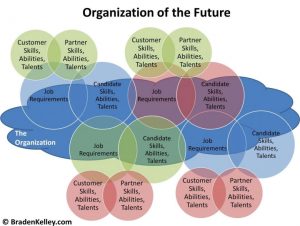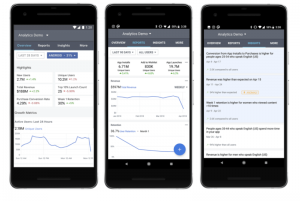No matter what social class you come from, it impacts how you show up at work.
For instance, depending on your personal circumstances, you would experience a company policy that expects employees to pay for work travel expenses upfront and be reimbursed later very differently. This kind of travel policy may not be overtly designed to create hardship; many companies simply operate under the assumption that employees have the financial means to lay out these funds—and that they can wait weeks or months to be reimbursed. But this assumption puts employees unable to pay the upfront expenses in an uncomfortable position, forced to choose between disclosing their financial circumstances to their manager or turning down valuable business development and networking experiences. Worse, both scenarios may put them at risk of being overlooked for future opportunities.
This kind of quagmire reflects the often unexamined social class dynamics that materialize in the workplace.
Social class is often a forgotten dimension of diversity, inclusion, belonging, and social impact (DIBS). There’s a general presumption that organizations are meritocracies; that as long as someone works hard, they can climb the organizational ladder and achieve a leadership position. But in reality, there are still class-related systems of inequity within most organizations that shape people’s experiences and career paths, including employees’ childhood zip codes, which can influence economic opportunity.
U.S. workers from lower-class backgrounds are 32% less likely to become managers compared to workers from higher social class backgrounds. On the other hand, students who have at least one parent with a law degree are more likely to get the revered judicial clerkships and private practice positions compared to their first-generation peers. In both cases, people from socially disadvantaged backgrounds are more likely to be overlooked for career advancement opportunities compared to their more privileged contemporaries.
Factors that can contribute to workplace social class inequity range from a company’s recruiting practices to informal assumptions, interactions, and networking opportunities throughout the organization. What may appear to be benign incidents can actually have a big impact on an employee’s career growth prospects and ultimately, may even strain company culture.
For companies looking to adapt their organizational practices to account for invisible class structures, here are five steps you can take:
Examine your recruitment criteria and practices
Start by taking the data associated with job applicants as well as current employees. What percentage lives in high poverty areas? Where did most of the executive team attend school? How about your employees? What degrees do they have, if any? If most of an organization’s workforce was educated at what are considered to be “elite” institutions, this could suggest an area of inequity in your company. While “elite” institutions can produce highly-qualified candidates and professionals, recruiting exclusively from these schools is certainly not the only means of finding exceptional employees.
Organizations can also look at whether some of their entry-level roles even require bachelor’s or master’s degrees. Reassessing education requirements can ensure that you have better access to a wide range of talent and that you’re not discrediting applicants who may be unable to afford an education but are still highly qualified through their work and life experiences.
For some, the application process can be very formal. But others may have received informal exposure to your industry, organization, or profession through their relatives, friends, or family members before entering the job application process. These seemingly inconsequential connections actually put a number of candidates—especially those from underprivileged backgrounds and with limited access to career resources—at a disadvantage. Workers from lower social classes often don’t benefit from exposure and valuable insider knowledge that is conveyed during informal interactions.
To address this, companies should consider implementing community outreach and mentoring initiatives that connect their employees with students from economically disadvantaged backgrounds to facilitate more of the informal interactions which are valuable when you are trying to get a foot in the door.
Consider updates to your organizational benefits and policies
If your organization doesn’t have a loan repayment benefit in place, it’s worth examining whether your employees would benefit from one. If an employee who had to take out student loans is earning the same amount as a co-worker with no student loans, it will take the former employee longer to achieve the same sense of financial stability as their latter colleagues. Many people think of loan repayment as a perk of a job, but it can also be understood as supporting class diversity and enabling employees to improve their economic and financial status.
Companies can also consider examining how their organizational policies may restrict economically disadvantaged employees from reaping the full benefits of their employment or prevent them from bringing their full selves to work. A good place to start is with work travel policies: instead of having a reimbursement policy that may prevent some employees from participating in conferences or business development trips, consider issuing a company credit or instituting an expedited reimbursement process.
Expand connection opportunities
Office gatherings are a great venue for employees to connect with their coworkers. But if these events are rendered exclusive because of the planned activities, destinations, or cost, they could further isolate portions of your workforce. Company event planning teams should look to diversify office networking and team bonding events to ensure a wide array of activities and meetups are organized.
For instance, many companies rely on sporting activities and events, like golf, to network with clients or connect with colleagues. While this practice can create a fun, non-work environment to build a rapport, it can also exclude swaths of the work population from important business development and relationship-building interactions. Roughly only 1 in 7 Americans play golf (14%) and startup costs can range from $455 to $2,867—expenses that not everyone can afford.
Instead of planning a bi-monthly golf outing, consider varying the schedule to include other sports that may be more budget- and beginner-friendly, such as hiking or corn hole tournaments. If your organization has the budget, renting out bowling alleys, arcades, or bars for a few hours can create other low-barrier options.
Additional ways to expand connection opportunities include instituting an internal mentoring program or holding speed networking events. Mentoring programs match new employees with company “veterans,” creating an opportunity for mentees to gain valuable company insights, for mentors to develop their leadership skills, and for both to expand their networks. Be mindful of how pairs are created, however. For instance, if matching is based on employees’ alma maters, this could further exacerbate class inequity within your organization. As an alternative, consider matching mentees and mentors based on career development goals and areas of interest.
Speed networking events also provide low-pressure and casual spaces for employees to connect with coworkers from across the organization. The randomized pairing and quick five-minute chats help to reduce company hierarchical structures.
Encourage transparency
Many organizations already have employee resource groups (ERGs), but many of those groups only focus on specific identities, such as gender identity, sexual orientation, race, or culture. Until now, few organizations have created spaces for talking about socioeconomic statuses or social mobility more broadly. Using the resources and support groups that universities now offer as a model, consider creating ERGs dedicated to supporting first generation professionals, or those who come from non-white collar backgrounds.
Organizations can also encourage transparency by being candid about paths of success in their organization. This could include publishing the evaluation criteria that the organization uses to determine promotions and compensation packages or bonuses. Streamlining resources makes it easier for people to get this type of information without needing to have insider knowledge.
Transparency can also be achieved by encouraging organizational leaders to talk openly about social class as a dimension of diversity. This could mean including the topic in any diversity-related materials the organization may have or even creating spaces for leaders to talk about their socioeconomic status, background, or upbringing.
Stay mindful of socioeconomic inequity and look for ways to address it head on
The corporate sector is at a unique crossroads when it comes to DIBS. While we’re seeing a general increase and interest in DIBS activity in the workplace, some companies are pulling back on formal policies and initiatives. But eliminating those programs doesn’t negate the fact that elements exist outside of the workplace that can influence a company’s culture and employees’ success prospects—elements that include social class.
Similar to other dimensions of DIBS, class can impact employees’ abilities to bring their full selves to work. But in the U.S., class is still a largely overlooked and understudied portion of DIBS.
Today, economic mobility remains low. If companies are to ensure that employees have equitable opportunities to thrive, more research must be conducted that examines these invisible class-related structures within our organizations and how they impact employees’ socioeconomic success.
(4)






